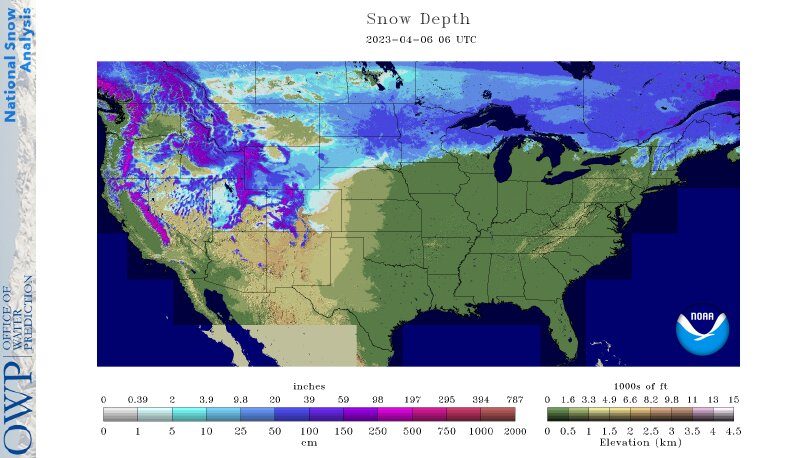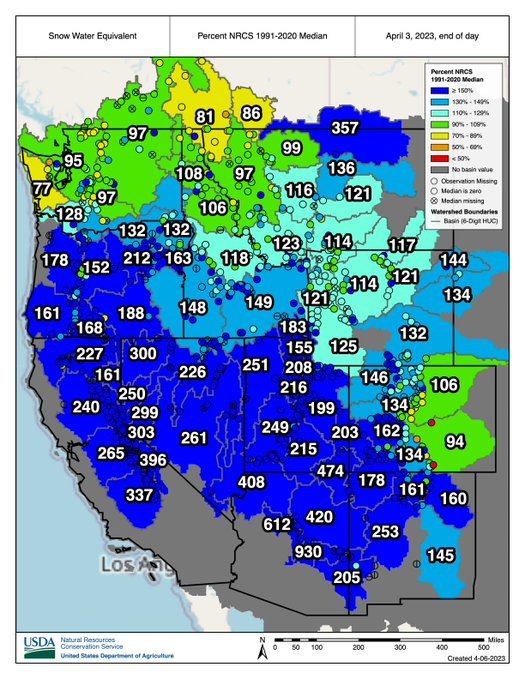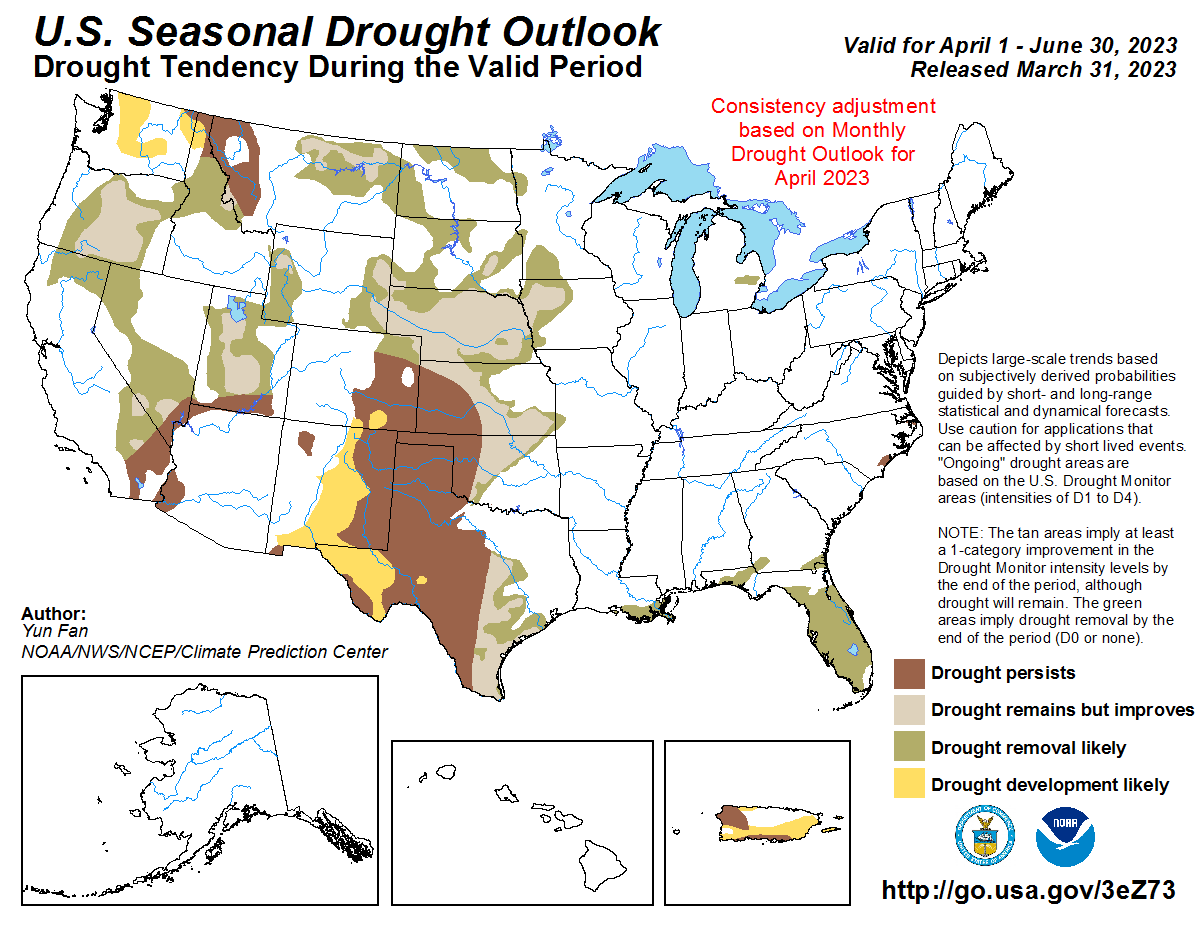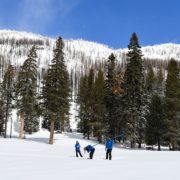Posts
New Underground Basins Planned to Help Socal Store Water for Next Drought
/in Home Headline, Media Coverage, San Diego County /by Andrea Mora /ABC 7 by Rob McMillanWith all the rain Southern California had this winter, local water agencies are working harder to capture and keep all that water for when the drier years return.
In San Bernardino, you might not notice the latest project because much of it will be underground.
The Santa Ana River flows from the San Bernardino Mountains to the Pacific Ocean in Orange County. While much of that water does end up in the ocean, plenty is stored in aquifers and reservoirs.
Record Snowpack Conditions in California, Parts of Southwest
/in California and the West, News /by Mike Leeby NRCS/WNNAfter a three-year drought in California and throughout the Southwest, many states throughout the West are measuring record snowpack conditions at NRCS SNOTEL stations and snow courses. Utah especially has seen a benchmark year for snowfall levels throughout the state.
Record snowpack
In California, the statewide snowpack (April 5) was 243% of normal, with the Northern Sierra at 198%, Central Sierra at 242%, and Southern Sierra at 302%. The California Department of Water Resources reported that the 2022-23 season will go down as one of the largest snowpacks on record in California.
California's snowpack is one of the biggest ever. DWR is reaching new heights to capture data to inform water supply forecasting and help local agencies plan for the spring snowmelt season.
–#california #water #cawater #snow pic.twitter.com/M2dbcy3Ej0— CA – DWR (@CA_DWR) April 5, 2023
In Nevada and Utah, current SWE percentages of median for select basins are as follows: Central Lahontan 273%, Central Nevada Desert Basins 267%, Great Salt Lake 224%, Lower Green 202%, Upper Colorado-Dolores 207%, and Upper Colorado-Dirty Devil 219%, according to the NRCS SNOTEL network.


Agricultural weather highlights
“A significant Western warming trend during the weekend and early next week will increase streamflow due to melting snow. On April 10-11, temperatures should briefly top 95°F in lower elevations of the Desert Southwest. Periods of Northwestern precipitation will add to the runoff potential in that region. Meanwhile, little or no precipitation will fall during the next 5 days across a vast swath of the country, including southern California and the Plains, Southwest, Midwest, and Northeast.
The #Sierra snowpack is near its climatological peak, and looking at today's numbers from @CA_DWR, the statewide percent of avg sits at 243% for April 5. The southern Sierra is an "eye-popping" 302% of avg. Track the melt into area rivers at https://t.co/Vab3udGkyz #CAwater #CAwx pic.twitter.com/k7FKQP92kl
— NWS California-Nevada RFC (@NWSCNRFC) April 5, 2023
Farther south, however, 5-day rainfall could total 1 to 3 inches or more from eastern Texas to the Carolinas, with the bulk of the rain falling by Saturday. The NWS 6- to 10-day outlook for April 11 – 15 calls for the likelihood of below-normal temperatures in California, the Great Basin, and the Northwest, while warmerthan-normal weather will dominate the central and eastern U.S. Meanwhile, above-normal precipitation from the Rockies into the Plains and upper Midwest should contrast with drier-than-normal conditions in the East (excluding Florida’s peninsula) and much of California.”

7 Charts That Explain California’s Wild Winter of 2023
/in California and the U.S., Home Headline, Media Coverage /by Andrea Mora /The Mercury News by Scooty Nickerson, Harriet Blair Rowan & Paiching WeiIf there ever was a winter to check off squares on your Wild Weather Bingo card, 2023 was it.
More than 30 atmospheric river storms. 97 mph wind gusts. Destructive tidal surges. Bomb cyclones. Flash floods. Levee breaks. The Fujiwhara Effect. Snow piled more than 240 inches deep at Mammoth Pass. One of the rainiest days on record in San Francisco.
Science Tackles the West’s Megadrought
/in California and the U.S., Home Headline, Media Coverage /by Andrea Mora /Yale Climate Connectionsby Tanya Petach & Emilio MateoTaps ran dry in Rio Verde on New Year’s Day.
Water had to be trucked in for household use in the affluent suburb outside Scottsdale, Arizona. The approximately 1,000 residents of the large, suburban stucco homes of Rio Verde were forced to take shorter showers and eat from paper plates.
Opinion: Catastrophic Floods and Breached Levees Reveal a Problem California Too Often Neglects
/in California and the U.S., Media Coverage /by Andrea Mora /LA Timesby Jeffrey Mount & Brett SandersFor much of the past decade, Californians have been fixated on drought, and rightly so. But the flipside of the state’s volatile climate returned this year, reminding us that “normal” in a land of extremes can be either very wet or very dry.
A dozen or more atmospheric rivers have caused more than $5 billion in damage in the state, with more damage expected when the Sierra Nevada snowpack melts in the coming weeks.
Sonoma County Tackles the Next Drought With Wastewater Recycling and Rainwater Harvesting Programs
/in California and the U.S., Media Coverage /by Andrea Mora /The Sonoma County Gazette by Roger CoryellAs California continues to grapple with recurrent droughts and the impacts of climate change, Sonoma County is implementing innovative water conservation strategies to ensure water security and promote sustainability. By investing in wastewater recycling and rainwater harvesting initiatives, the county aims to build resilience and safeguard water resources for its residents and industries.
Dramatic Photos Show How Storms Filled California Reservoirs
/in California and the U.S., Home Headline, Media Coverage /by Mike Lee /APby Terry Chea, Noah Berger and Josh EdelsonWater levels fell so low in key reservoirs during the depth of California’s drought that boat docks sat on dry, cracked land and cars drove into the center of what should have been Folsom Lake.
Those scenes are no more after a series of powerful storms dumped record amounts of rain and snow across California, replenishing reservoirs and bringing an end — mostly — to the state’s three-year drought.
Pismo Beach Enters Desal Study, Focus Still on Central Coast Blue
/in California and the U.S., Home Headline, Media Coverage /by Mike Lee /New Timesby Bulbul RajagopalPismo Beach joined a local desalination feasibility study, completing the San Luis Obispo County-wide bandwagon to identify long-term water supply sources.
The last to participate, the Pismo Beach City Council agreed on April 4 to support county efforts in the face of exiting two historic droughts and an uncharacteristically wet winter season, the flood control and water conservation district naming water resiliency as a high priority, and the Central Coast Blue project nearing realization.
Sierra Nevada Snowpack: One of the Largest on Record
/in California and the U.S., Home Headline, Media Coverage /by Mike Lee /California Department of Water Resources Mentioned: San Diego County Water AuthorityFollowing three consecutive years of drought in California, the Sierra Nevada snowpack is one of the most bountiful in more than 40 years. While the record snowpack and snow water equivalent is great news for water supply, there are concerns the record snowpack could create flooding issues.




